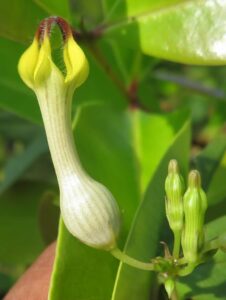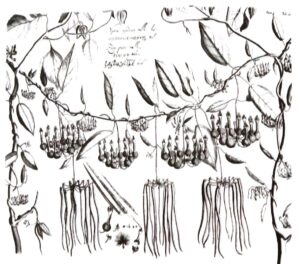Ceropegia Candelabrum
A rare valuable edible and medicinal plant..
An Endangered plant mentioned in Hortus Malabaricus…
Malayalam: Nagathumba, Njottanjodiyan valli, Kammanam kizhangu, Irula, Kavalae kodi etc.
Botanical name: Ceropegia candelabrum
Family: Asclepiadaceae
The Latin specific epithet candelabrum is derived from the candelabra-like appearance of the inflorescences…
Ceropegia candelabrum is a perennial, succulent, twining plant with a roundish tuber. The strong, bare shoots have a diameter of 3 to 4 mm. The leaves are stalked. The slightly fleshy leaf blades are linear, elliptical to rounded tip sharpened…
The inflorescence is borne on a 1 to 3 cm long stem. The bill umbels carry 5 to 12 flowers. The flower stems are 3 to 10 mm long, the sepals about 4 mm. The corolla is 2.5 to 4.5 cm high, greenish-yellow colored with red-brown stripes…
The species is found in India and Sri Lanka as well as in Vietnam before. In India, it blooms from August to January. Fruits are formed from September to January…
The tuberous roots are edible and are eaten especially by the poorest, raw or cooked. The whole plant has the properties like Arsaghna, Deepana, Vishaghna, Apasmaraghna, and Balya.
Ceropegia candelabrum is now in the original area has become quite rare. There are already projects for artificial propagation.
By,
Prof. Dr. Ajayan Sadanandan MD(Ayu), PhD
Head – Ayurveda Ethno Medico Botanical Team
Ashtamgam Ayurveda Chikitsalayam & Vidyapeedham






